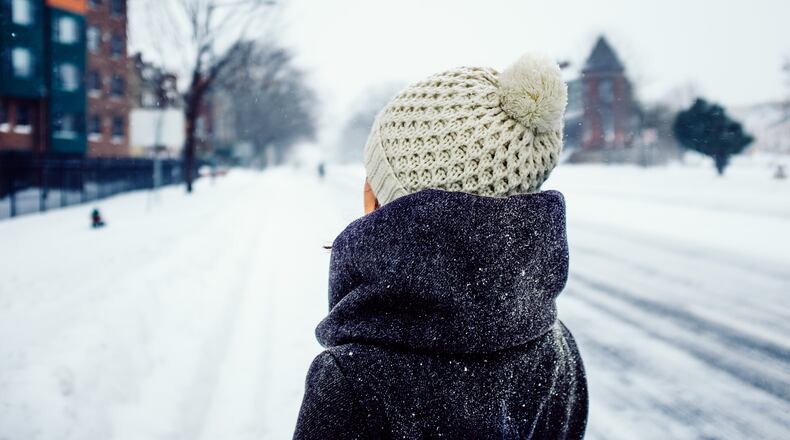»ELWELL: Super blue blood moon eclipse will happen Wednesday
So far this season, we’ve had around 15 inches of snow officially in Dayton which is nearly 3 inches above normal. At this same time last year, only about 6 inches of snow had fallen the entire season.
While many of us may get sick of the snow, we really should try to enjoy it more, and here is why: Snow cover is an important regulator of Earth’s temperature globally and locally.
At the global scale, Earth’s annual snow cover spans tens of millions of square miles and reflects about 80 to 90 percent of incoming radiation. This is a critical part of Earth’s complex system of maintaining a planet habitable for us. This cooling effect of snow helps to offset warming.
»TRENDING NEWS: Court documents: Ex-Judge grabbed woman’s behind at gas station
Recent studies published in the Bulletin of the American Meteorological Society suggest that warming temperatures are reducing the amount of time and the extent that snow cover is on the ground in places like the Arctic.
This all has to do with what is called albedo. The term albedo represents how well a surface reflects solar energy although it’s typically most relevant to the visible part of sun’s energy. Albedo values typically range from 0 (perfect absorber) to 1 (reflects 100 percent of the energy). Darker surfaces tend to have a lower albedo than lighter surfaces. Ocean water typically reflects only 6 percent of the incoming solar radiation and absorbs the rest, while sea ice reflects 50 to 70 percent of the incoming energy. The sea ice absorbs less solar energy and keeps the surface cooler. Snow has an even higher albedo than sea ice, and so thick sea ice covered with snow reflects as much as 90 percent of the incoming solar radiation.
Locally, snow cover can also cool temperatures because the albedo effect does not allow for much energy absorption (and therefore heating) just above the ground. Dr. Thomas Mote, a distinguished research professor at the University of Georgia, published a paper in the Journal of Applied Meteorology and Climatology on how snow cover reduces temperature. On average, his research found snow cover reduced air temperatures close to 2 degrees Fahrenheit, but albedo was not the only factor. Cloud cover was also a significant factor. This effect can be even more pronounced at night when a deep snow cover can drop local temperatures by more than 10 degrees compared to snow free conditions.
»RELATED: How will LaNina affect winter in the Miami Valley?
My favorite part of newly falling snow on top of a snow back is the amazing insulation properties the snow has. You’ve probably noticed sometimes during a heavy snow how peacefully quiet it will be. Not only does the snow dampen noise and loud sounds, but the falling snow insulates heat. Therefore, some hibernating animals will dig snow caves. Newly fallen snow is composed of a high percentage of air trapped among the accumulated snow crystals. Since the air can barely move, heat transfer is greatly reduced. Fresh, uncompacted snow typically is 90 to 95 percent trapped air.
You may have also noticed that when you walk on fresh snow, it makes a “crunching” sound. To see what causes this, you’d likely have to look under a microscope. But basically, when you step on snow, the ice grains that make up snowflakes rub against each other. This creates friction or resistance. The sudden squashing of the snow at lower temperatures produces the familiar creaking or crunching sound. At warmer temperatures, closer to melting, this friction is reduced to the point where the sliding of the grains against each other produces little or no noise. It’s difficult to say at what temperature the snow starts to crunch, but the colder the snow, the louder the crunch.
»LATEST WEATHER: Get your county-by-county forecast
So, the next time you are walking through the snow, I hope you will have a new appreciation for one of winter’s wonders. And remember, if when you walk in the snow it makes a lot of noise, grab an extra coat, as that means it may be even colder than you realize.
Eric Elwell is WHIO StormCenter 7 Chief Meteorologist. Contact him at eric.elwell@coxinc.com or follow him on Facebook and Twitter.
About the Author
